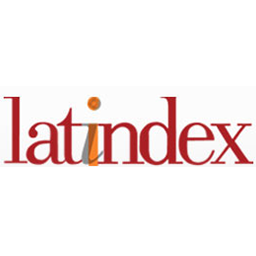Distribution and Socio-spatial Segregation of cruise ship workers in Cozumel, Mexico
Resumen
The cruise industry is one of the most profitable businesses in the world having a constant growth since the 1980’s. However, it is important to mention that this success has been reached in part due to the workforce in the vessels, better known as cruise ship crew members.
As well as any other type of tourism, visitors have several effects on ports of call when vessels berth in ports of call. But even when there is knowledge on the effects of cruise tourism in the destinations (mainly caused by tourists), there is a scarcity of literature in terms of issues related to the cruise ship staff on land.
In addition to the above, information about the activities and behaviour of the cruise workers, the knowledge of their specific distribution and socio-spatial segregation according to their hierarchies and nationalities during their free time in ports of call is practically null.
Therefore, the aim of this research work is to point out the distribution of cruise ship workers in order to demonstrate their segregation in the Island of Cozumel, Mexico, according to the nation they come from and their position at work.
Findings demonstrate that there are 79 different sites visited by crew members in Cozumel Island. It has also been identified that their distribution and socio-spatial segregation on the island is related to their hierarchies at work and nationalities, which could lead to a remarkable socioeconomic influence during their free time in the destination.
Palabras clave
Texto completo:
PDF (English)Referencias
Brida, J., & Zapata, S. (2010). Cruise Tourism: Economic, Socio-Cultural and Environmental Impacts. International Journal of Leisure and Tourism Marketing. 1(3), 205-226.
Business Research & Economic Advisors. (2018). Economic Contribution of Cruise Tourism to the Destination Economies, Vol I. Phillipsburg: BREA.
Cruise Lines International Association Inc. (2017). 2017 CLIA State of the Industry. Retrieved from: http://www.cruising.org/about-the-industry/research/2017-state-of-the-industry: 10/01/2017.
Dowling, R. (2006). The Cruising Industry. En: Dowling, R. Cruise Ship Tourism. London, UK: CABI.
Florida-Caribbean Cruise Association. (2019). Cruise Industry Overview, State of the Cruise Industry. Pembroke Pines, Florida: FCCA.
Author, & González, A. (2018). Relaciones sociales duraderas entre tripulación de cruceros y población residente, análisis del caso Cozumel desde la teoría del intercambio social. PASOS Revista de Turismo y Patrimonio Cultural, 16(4), 1089-1104.
Gibson, P. (2008). Cruising in the 21st century, who works while others play? International Journal of Hospitality Management, 27(1), 42-52.
Gibson, P., & Bentley, M. (2006). A Study of Impacts: Cruise Tourism and the South West of England. Journal of Travel and Tourism Marketing, 20, 63-77.
Hall, C. & Page, S. (2006). The Geography of Tourism and Recreation, Environment, Place and Space. London: Routledge.
Henry, J., & Thyne, M. (2007). Getting them off the Boat: An Exploratory Study into Cruise Ship Passenger and Crew Motivations to Disembark. In Australian and New Zealand Marketing Academy, ANZMAC Conference. 2007: 684-691.
Instituto Nacional de Estadística y Geografía (2015). Retrieved from: http://www3.inegi.org.mx/sistemas/tabuladosbasicos/default.aspx?c=33725&s=est: 2/09/2016
Kerswill, M., & Mair, H. (2015). Big Ships, Small Towns: Understanding Cruise Port Development in Falmouth, Jamaica. Tourism in Marine Environments, 10(3-4), 189-199.
Klein, R. (2003). “Cruising-Out of Control: The Cruise Industry, The environment, Workers, and the Maritimes”. Canadian Centre for Policy Alternatives. 1-27.
Lima, J. (2001). Socio-spatial segregation and urban form: Belém at the end of the 1990s. Geoforum. 32, 493-507.
Martínez. C. (2008). Configuración Territorial del Turismo en las Costas de la Isla de Cozumel. Teoría y Práxis, 5, 343-357.
Palafox, A. & Zizumbo, L. (2009). Distribución Territorial y Turismo en Cozumel, Estado de Quintana Roo, México. Gestión Turística, 11, 69-88.
Petrick, J., & Durko, A. (2015). Segmenting Luxury Cruise Tourists Based on their Motivations. Tourism in Marine Environments, 10(3-4), 149-157.
Polat, N. (2015). Technical Innovations in Cruise Tourism and Results of Sustainability. Procedia, Social and Behavioral Sciences, 195, 438-445.
Santander, L. & Ramos, M. (2011). El nacimiento de un destino turístico en el Caribe Mexicano. Cozumel, de Isla abandonada a puerto de cruceros. El Periplo Sustentable, 21, 5-30.
Schelling, T. C. (1971). Dynamic models of segregation. Journal of mathematical sociology, 1(2), 143-186.
Thyne, M., James, H., & Lloyd, N. (2015). Land Ahoy, How Cruise Passengers Decide on Their Shore Experience. Tourism in Marine Environments, 10(3-4),177-187.
Van Broeck, A., & Dierckx, G. (2011). Activities of cruise ship employees in Cozumel, Mexico. ÉtudesCaribéennes, Retrieved from: http: // etudescaribeennes.revues.org /5133?lang=es: 06/01/15.
Véronneau, S., & Roy, J. (2012): Cruise Lines’ Purchasing and Logistics Management. En: Vogel, M., Pathanassis, A. Y Wolber, B. The Business and Management of Ocean Cruises. Wallingford, UK: CAB International.
Williams, S. & Lew, A. (2015). Tourism Geography, Critical Understandings of Place, Space and Experience. London: Routledge.
Wood, R. (2000). Caribbean Cruise Tourism, Gobalization at sea. Annals of Tourism Research, 27(2), 345-370.
Wu, B. (2005). The world Cruise Industry: Aprofile of the Global Labour Market. Cardiff, UK: Seaferers International Research Centre.
Zhao, M. (2002). Emotional Labour in a Globalized Labour Market: Seaferers on Cruise Ships. Cardiff, UK: Seaferers International Research Centre.
Enlaces refback
- No hay ningún enlace refback.
Copyright (c) 2021 Regiones y Desarrollo Sustentable

Este obra está bajo una licencia de Creative Commons Reconocimiento 4.0 Internacional.
REGIONES Y DESARROLLO SUSTENTABLE
Año XXIII, No. 44, Enero-Diciembre, 2023, es una revista de publicación continua editada por El Colegio de Tlaxcala, A.C., Avenida Melchor Ocampo No. 28, Col. San Pablo Apetatitlán, Apetatitlán de Antonio Carvajal, Tlaxcala, C. P. 90600 Tel. 52 (246) 46 4 52 33, ext. 1135, http://www.coltlax.edu.mx/openj/index.php/ReyDS, rev_regionesydesarrollosustentable@coltlax.edu.mx Editor responsable: Arturo Juárez Martínez. Reserva de Derechos al Uso Exclusivo No., ISSN:2594-1429, otorgados por el Instituto Nacional de Derecho de Autor. Responsable de la última actualización de este número, Departamento de Ediciones de El Colegio de Tlaxcala, A.C., Arturo Juárez Martínez, Avenida Melchor Ocampo No. 28, Col. San Pablo Apetatitlán, Apetatitlán de Antonio Carvajal, C.P. 90600, fecha de última modificación: 02 de febrero de 2024.








